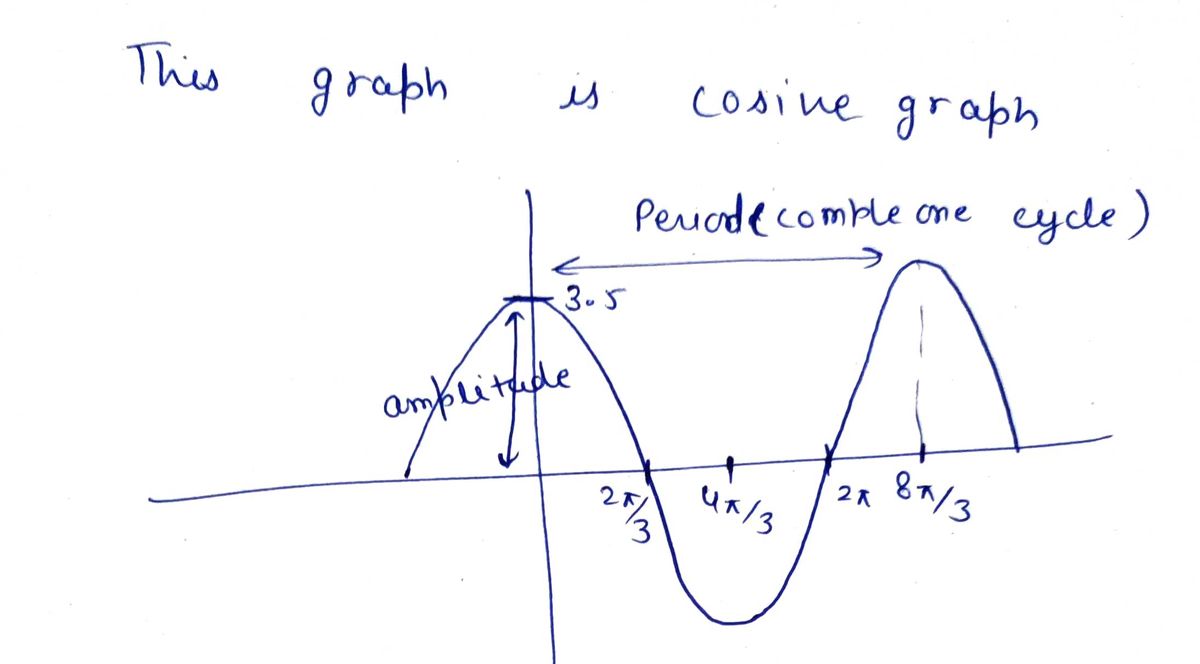Calculus: Early Transcendentals
8th Edition
ISBN:9781285741550
Author:James Stewart
Publisher:James Stewart
Chapter1: Functions And Models
Section: Chapter Questions
Problem 1RCC: (a) What is a function? What are its domain and range? (b) What is the graph of a function? (c) How...
Related questions
Question

Transcribed Image Text:**Title: Understanding Trigonometric Graphs**
**Instructions:**
Write an equation of the form \( y = a \sin b x \) or \( y = a \cos b x \) to describe the graph below.
**Graph Explanation:**
- The graph shows a trigonometric wave, specifically a sine or cosine function.
- The x-axis is labeled with multiples of \(\frac{\pi}{3}\), ranging from \(-\frac{4\pi}{3}\) to \(4\pi\).
- The y-axis ranges from -4 to 4, highlighting the amplitude of the wave.
- The wave peaks at approximately 4 and troughs at approximately -4, suggesting an amplitude of 4.
- The wave completes a cycle every \(2\pi\), indicating a period consistent with standard sine and cosine waves.
**Equation Box:**
- Enter the equation in the provided box using the given math symbols: \(\pi\), \(\sin\), \(\cos\), and an equals sign.
**Note:**
Adjust the values of \(a\) and \(b\) in the sine or cosine function to match the amplitude and period observed in the graph.
Expert Solution
Step 1

Step by step
Solved in 2 steps with 2 images

Recommended textbooks for you

Calculus: Early Transcendentals
Calculus
ISBN:
9781285741550
Author:
James Stewart
Publisher:
Cengage Learning

Thomas' Calculus (14th Edition)
Calculus
ISBN:
9780134438986
Author:
Joel R. Hass, Christopher E. Heil, Maurice D. Weir
Publisher:
PEARSON

Calculus: Early Transcendentals (3rd Edition)
Calculus
ISBN:
9780134763644
Author:
William L. Briggs, Lyle Cochran, Bernard Gillett, Eric Schulz
Publisher:
PEARSON

Calculus: Early Transcendentals
Calculus
ISBN:
9781285741550
Author:
James Stewart
Publisher:
Cengage Learning

Thomas' Calculus (14th Edition)
Calculus
ISBN:
9780134438986
Author:
Joel R. Hass, Christopher E. Heil, Maurice D. Weir
Publisher:
PEARSON

Calculus: Early Transcendentals (3rd Edition)
Calculus
ISBN:
9780134763644
Author:
William L. Briggs, Lyle Cochran, Bernard Gillett, Eric Schulz
Publisher:
PEARSON

Calculus: Early Transcendentals
Calculus
ISBN:
9781319050740
Author:
Jon Rogawski, Colin Adams, Robert Franzosa
Publisher:
W. H. Freeman


Calculus: Early Transcendental Functions
Calculus
ISBN:
9781337552516
Author:
Ron Larson, Bruce H. Edwards
Publisher:
Cengage Learning